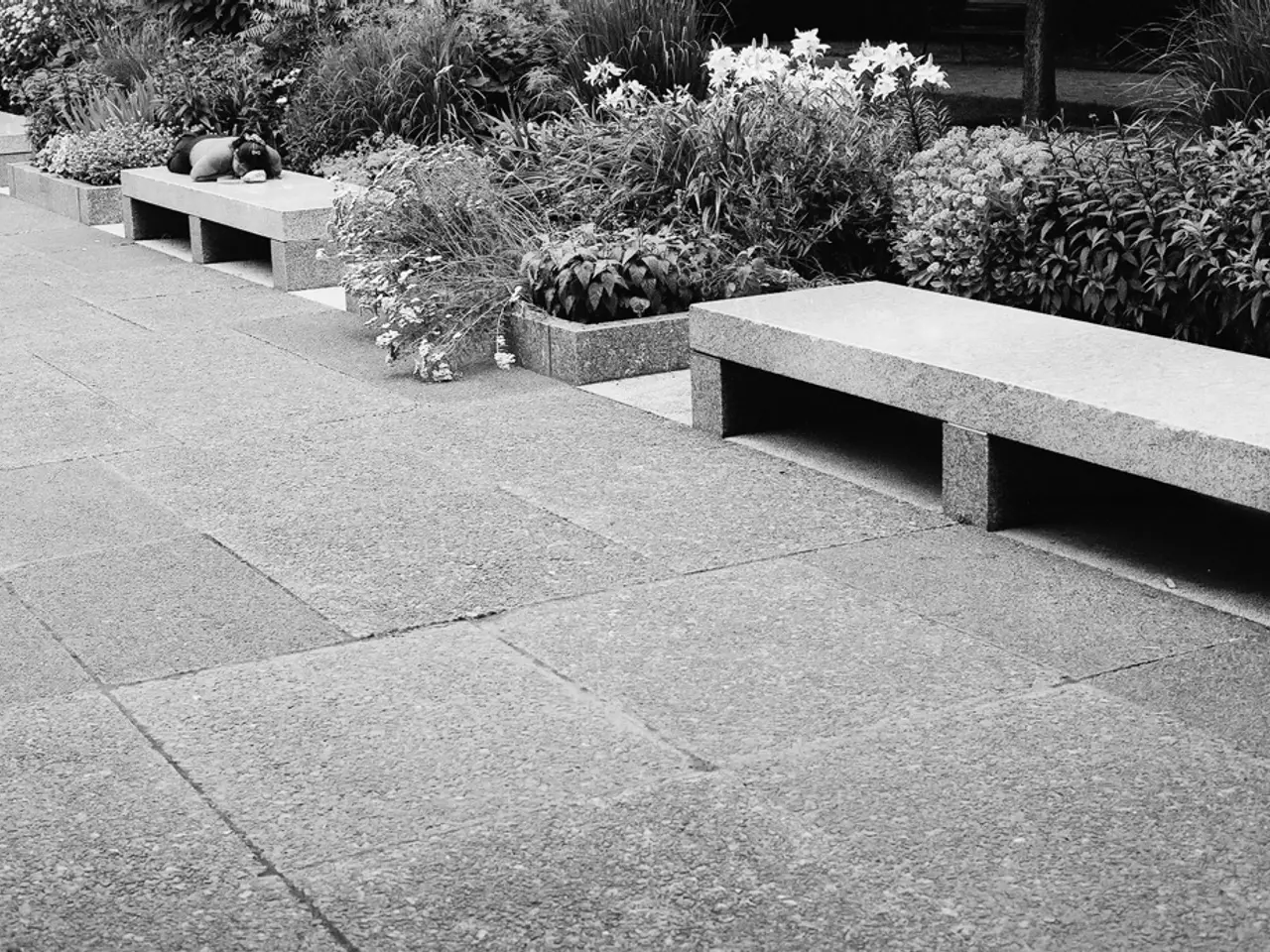Explore the Advantages of Integrating a Trellis into a Raised Garden Bed, along with Attractive Design Concepts
Maximizing Growing Space with Trellises in Raised Garden Beds
Raised garden beds with trellises are becoming increasingly popular among gardeners this year, offering a practical and aesthetic solution for growing a variety of crops. By allowing climbing plants to grow vertically, trellises keep crops off the ground, improve air circulation, and create more growing space per square foot.
One of the advantages of using trellises in raised garden beds is the ability to maximize growing space. Climbing plants like tomatoes, cucumbers, peas, and runner beans can be effectively grown in a smaller area, making them an ideal choice for those with limited space.
Building a trellis can be a simple and affordable project. Gardeners can use a variety of materials, from untreated scaffold boards and sturdy branches to repurposed items like vintage ladders or old window frames. For example, a raised corner planter with wooden posts and stainless steel wire creates a sturdy trellis for peas and beans.
It's important to construct trellises with stable frames to ensure they can support the weight of mature climbing plants. Posts can be secured in the ground or affixed against a wall or fence. Creative designs like teepee or obelisk shapes made of tied branches or lattice panels can provide both aesthetic appeal and practical support for vines.
When planning a trellis, consider the weight and cost of the materials, as well as the location and whether the structure should be long-lasting or temporary. For lighter climbers like morning glories or sweet peas, thinner twine and smaller structures may suffice, while heavier plants like climbing roses or tomatoes need stronger, sturdier supports.
Vertical planting techniques, such as drilling eyelets into posts and running wire horizontally for plants to grab onto, can help keep plants organized and accessible within raised beds. Filling raised beds with rich, layered soil and compost can support vigorous plant growth alongside trellises, improving overall yield in a compact area.
In addition to raised garden beds, trellises can be built against the house, garage, or outbuilding, or even against a fence or balcony railing to support lighter-weight vines and fruit. A tomato tower can also be used for climbing crops.
For those with even smaller spaces, a self-watering tomato pot with a built-in trellis is available. Frame trellises, such as latticework cages supported by plastic or metal hoops, are suitable for sprawling crops like cucumbers, while other vertical growers like beans, peas, and smaller squash varieties can climb a chain link fence. Chicken wire, plastic mesh, or string can be used to create a latticework for climbing crops.
When building a trellis, it's essential to consider the specific needs of the plants you want to grow. With careful planning and the right materials, trellises can help optimize small garden spaces, add visual interest, and improve plant health by elevating vines off the soil, reducing disease risk, and enhancing harvest efficiency. Building your own trellis can also be a fun and rewarding gardening project.
Amy Grant, a professional chef, gardener, and writer with 30 years of gardening experience and 15 years of writing experience, specializes in culinary gardening. Her expertise and practical tips can help gardeners make the most of their growing space and enjoy a bountiful harvest.
The use of trellises in raised garden beds allows gardeners to maximize their growing space effectively, making it ideal for those with limited space, as climbing plants like tomatoes, cucumbers, peas, and runner beans can be grown in a smaller area. Home-and-garden enthusiasts can create custom trellises using a variety of materials for their home-and-garden projects, such as vintage ladders or old window frames.




